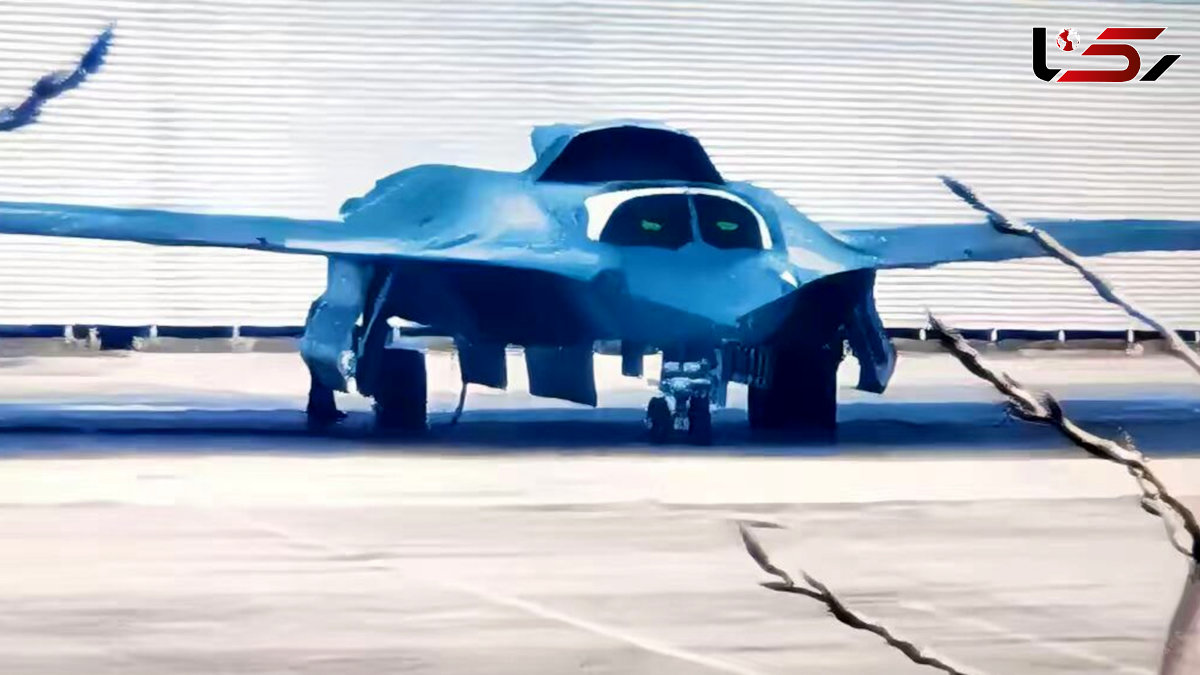The Mysterious Fighter Set to Become the Nightmare of America’s F-47
Rokna Political Desk: A fighter jet developed by Chengdu Aircraft Industry Group, officially introduced by Chinese military authorities as the lead of the country’s sixth-generation fighter series, is emerging as a key element in China’s pursuit of air superiority both regionally and globally.

In June 2025, China released images of its highly anticipated stealth fighter, the J-36, produced by Chengdu Aircraft Industry Group. The photographs reveal a unique design feature: a side-by-side cockpit for two pilots (or a pilot and co-pilot). This configuration appears intended to enhance operational capabilities for managing unmanned aerial vehicles, electronic warfare, and long-range engagements with enemy aircraft—rather than close-range dogfights. This doctrine underscores that the J-36 is not merely a fighter jet; Chinese officials envision it as a flying command-and-control hub, serving as the first node in a multi-layered air command model.
Military analysts examining the limited images note that most visible modifications—from wing shapes to fuselage contours—focus on reducing radar cross-section and enhancing stealth capabilities. The images also indicate the J-36 can carry eight long-range air-to-air missiles, while providing additional space for short-range weapons suitable for close engagements.
Sources suggest the J-36 is equipped with two next-generation WS-15 turbofan engines, each capable of accelerating the aircraft to approximately Mach 1.5 without afterburner, providing supersonic speeds with reduced fuel consumption. The radar-absorbing coating, body-integrated antennas, and other features collectively position the J-36 among the world’s most stealth-capable fighters.
J-36: The “Mother Bird” for Commanding Other Aircraft
The J-36’s advanced sensor suite, leveraging gallium nitride transmitters and receivers, enables infrared detection of other stealth aircraft. Its comprehensive electronic surveillance system allows the pilot to track enemy radar units across a significant operational area.
This design ensures the J-36 can oversee vast regions and engage enemy aircraft from extended distances, enabling monitoring of the Philippine Sea and central Pacific from within Chinese airspace and, if necessary, targeting U.S. aircraft operating in the region. Analysts highlight the side-by-side cockpit as a critical feature for emergency management: while one pilot navigates and controls the fighter, the other can focus on electronic warfare, communications management, and UAV coordination. This configuration allows the PLAAF to conduct multi-layered attacks, manage long-range missile engagements, integrate subordinate aircraft at supersonic speeds, and execute UAV operations under the protective umbrella of the J-36.
F-47: More Advanced, More Formidable, and Far Costlier
Meanwhile, the U.S. Air Force is accelerating the development of its own sixth-generation fighter, the F-47. This highly classified program aims to deliver a next-generation aircraft capable of asserting uncontested air dominance, easily switching between low-fuel cruise mode and high-energy combat mode.
The F-47 is designed with advanced sensors to collect extensive environmental data and employs artificial intelligence to continuously reduce pilot workload. Notably, it includes an air combat collaboration system, allowing the fighter to leverage swarms of UAVs for sensor extension, deception of enemy fighters, and enhanced strike accuracy.
J-36 vs. F-47: A High-Stakes Aerial Rivalry
The imminent entry of the J-36 and F-47 into the Chinese and U.S. Air Forces represents a strategic competition for air supremacy over the Indo-Pacific region, likely increasing tensions in this theater. For Beijing, the J-36 is not merely a technological breakthrough but a clear signal challenging U.S. air dominance in the region, potentially elevating China’s perceived aerial power. From Washington’s perspective, the success of the F-47 is integral to achieving projected air superiority in the 2030 roadmap, ensuring that the U.S. Air Force can penetrate any global defense system.
For observers outside these two nations, the rivalry represents the evolution of aerial warfare and the sixth-generation fighter era—where human-machine collaboration, electromagnetic spectrum control, and error-free automated systems will dominate the battlefield.
Send Comments